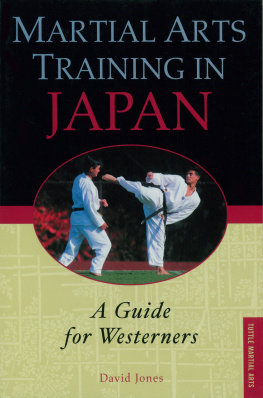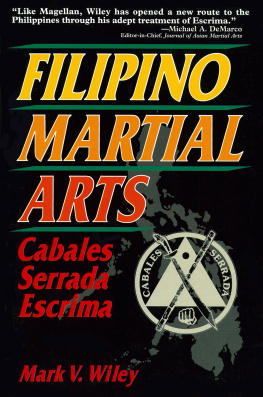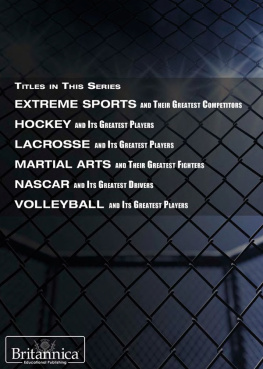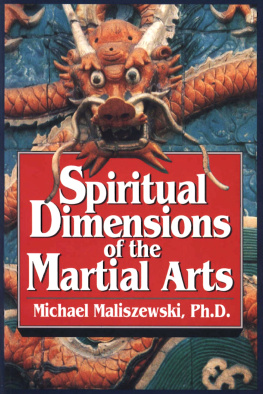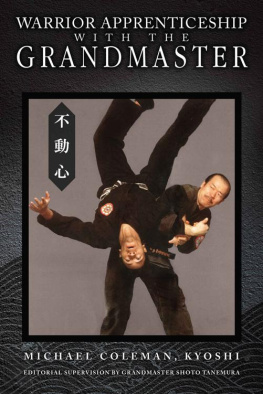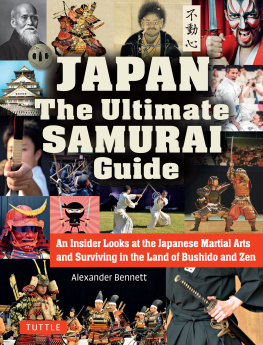Disclaimer
Please note that the authors and publisher of this book are not responsible in any manner whatsoever for any injury that may result from practicing the techniques and/or following the instructions given within. Since the physical activities described herein may be too strenuous in nature for some readers to engage in safely, it is essential that a physician be consulted prior to training.
All Rights Reserved
No part of this publication, including illustrations, may be reproduced or utilized in any form or by any means, electronic or mechanical, including photocopying, recording, or by any information storage and retrieval system (beyond that copying permitted by sections 107 and 108 of the US Copyright Law and except by reviewers for the public press), without written permission from Via Media Publishing Company.
Warning: Any unauthorized act in relation to a copyright work may result in both a civil claim for damages and criminal prosecution.
Copyright 2017
by Via Media Publishing Company
941 Calle Mejia #822, Santa Fe, NM 87501 USA
Articles in this anthology were originally published in the Journal of Asian Martial Arts. Listed according to the table of contents for this anthology:
Harrison-Pepper, S. (1993), Vol. 2 No. 2, pp. 90-103
Monday, N. (1994), Vol. 3 No. 1, pp. 72-89
Hershey, L. (1994), Vol. 3 No. 3, pp. 52-61
Varley, P. (1995), Vol. 4 No. 4, pp. 10-11
Hurst, G. C. (1995), Vol. 4 No. 4, pp. 12-25
Friday, C. (1995), Vol. 4 No. 4, pp. 26-39
VanHorne, W. (1996), Vol. 5 No. 4, pp. 10-19
Donohue, J. (2005), Vol. 14 No. 2, pp. 8-29
Donohue, J. (2006), Vol. 15 No. 3, pp. 8-19
Taylor, K. (2009), Vol. 18 No. 1, pp. 42-63
Book and cover design by
Via Media Publishing Company
Edited by Michael A. DeMarco, M.A.
Cover illustration
Feodor Tamarsky, 4th dan Takeda Ryu,
and master painter of martial art subjects.
www.tamarskygallery.com
ISBN-13: 978-1544223339
ISBN-10: 1544223331
www.viamediapublishing.com
contents

by Michael DeMarco, M.A.
CHAPTERS
by Sally Harrison-Pepper, Ph.D.
by Nyle C. Monday, M.A.
by Lewis Hershey, Ph.D.
by H. Paul Varley, Ph.D.
by G. Cameron Hurst, III, Ph.D.
by Karl F. Friday, Ph.D.
by Wayne W. Van Horne, Ph.D.
by John Donohue, Ph.D.
by John Donohue, Ph.D.
by Kimberley Taylor, M.Sc.
preface

In contrast to the overabundance of writings about martial arts that are often promotional and misinformative, there are rare works by scholars that are praiseworthy for their sincere, unbiased approach to writing. This is the very definition of scholarly. This two-volume anthology brings together the best scholarly works published in the Journal of Asian Martial Arts on the topic of teaching and learning Japanese martial arts.
In this volume, youll find ten chapters that dive deep into Japanese martial traditions, combining aspects of history and culture that explain how teaching methods developed and evolved. Dr. Harrison-Peppers chapter sets the tone with a focus on the fundamental studentteacher relationship that is responsible for the transmission of any art. She uses sociological and performance studies to analyze the martial arts maturing process.
Understanding the teacher-student relationship is vital for all involved Japanese combative arts. Since Japan was ruled by a warrior class for nearly 700 years, it is necessary to understand the method by which warriors were educated through the ryuha system. Nyle Mondays chapter presents this system.
Dr. Lewis Hershey explores the way in which a martial art can serve as a vehicle for non-discursive intercultural exchange in the teaching process. His chapter provides a discussion of the importance of embodying the feeling or aesthetic of a particular system as a way of knowing and understanding martial techniques.
The next three chapters were originally prepared for a meeting of the Association for Asian Studies. Dr. Paul Varley states that most who have written about martial arts practice are not trained scholars and their writings vary greatly in quality. He discusses the state of writing in this field and introduces the other authors.
Dr. Cameron Hurst discusses the characteristics of the martial arts that place them squarely into the category of artistic ways along with such familiar arts as Noh, the tea ceremony, and flower arranging. This reflects the family headship system of instruction to carry on the schools traditions.
Dr. Karl Friday defines the term ryuha as branch of the current, representing the onward flow of a stream of thought; the branches betoken the splitting off that occurs as insights are passed from master to students, generation after generation. His chapter shows how ryuha exist to hand on knowledge with pattern practice (kata) being the core of transmission.
Is it warriors individualism that is prized in modern conformity-ridden Japanese culture, or is this an erroneous interpretation of the idealized warrior image by Westerners? In the next chapter, Dr. Wayne VanHornes research is persuading, showing that the ultimate goal of the training is to foster individuals to contribute to the betterment of the collective society with social responsibility.
In the following chapter, Dr. John Donohue analyzes the organizational components of traditional martial arts training and relates them to modern pedagogical theories. He concludes that the instructional theory embedded in martial arts training is at least as sophisticated and highly developed as are the techniques and philosophies of these systems. In the next chapter, he examines kata training as (1) a cultural activity that has been shaped by the structural characteristics of Japanese culture, and kata training as (2) a highly structured and effective mechanism for imparting technical skill in the martial arts.
Kim Taylor provides the final chapter dealing with progressive instruction found in many kata-based martial arts. Using iaido (sword drawing) as an example, he demonstrates how a set of practice can buildone kata after the otherfrom simple to more complex ideas and provide a deeper understanding of the entire set.
If you are interested in Japanese martial traditions, you will find much in these ten chapters that clarify why the arts are taught according to a longstanding traditionand also why there have been evolutionary changes in the instructional methods. There is sound logic for the old traditions, as well as for the changes. The scholarly research presented in this anthology will improve a teachers way of instructing and help a student understand what to expect out of his or her studies.
Michael A. DeMarco, Publisher
Santa Fe, New Mexico
March 2017
chapter 1
THE MARTIAL ARTS: RITES OF PASSAGE, DRAMAS OF PERSUASION
by Sally Harrison-Pepper, Ph.D.

Passages can be elaborate gateways often symbolically decorated according to their political or religious importance. Other passageways hold importance as images which are psychologically significant. Photos by M. DeMarco.
Traditional martial artists believe that the physical disciplines practiced by Shaolin Temple monks during the seventh century formed the matrix for their art. Martial arts instructor Gichin Funakoshi, for example, includes the story of Bodhidharmas journey from western India to Chinas Henan Province in his book
Next page

